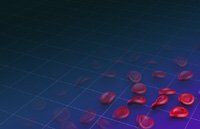Grand Rounds: New concepts in nongestational acute uterine bleeding
Treat your nonpregnant patient with one of these drug regimens to reduce out-of-control blood loss while she's waiting for the operating room-and she may not need surgery to stop hemorrhage, after all, says this expert. Noting that our standard treatments for this challenging, often overlooked emergency are based on scant data, he assesses your options.

Key Points

After a brief look at the pathogenesis of acute uterine bleeding in nonpregnant reproductive-aged women, we'll provide practical advice on what you need to do first in such an urgent circumstance or emergency and assess medical and surgical management options, with an emphasis on trying outpatient drug regimens before rushing to surgery.
What triggers acute uterine bleeding in reproductive-aged women?

Common culprits. The pathogenesis of anovulatory AUB is systemic and includes immaturity of the hypothalamic-pituitary-ovarian axis (often seen in perimenarchal girls) and several entities either suspected or known to affect the normal functioning of this axis. Irregular, unpredictable bleeding is associated with psychological stress, rapid changes in weight, or excessive exercise-or any combination thereof. Although there's no specific test for what's perhaps the most common culprit-polycystic ovarian syndrome-hyperprolactinemia and hypothyroidism can be diagnosed using appropriate serum measurements.3 We know that in some women, drugs that affect dopamine metabolism also affect ovulatory function.
Fibroids. The causes of AUB associated with uterine leiomyomas continue to puzzle us. We know that most fibroids are asymptomatic, and despite a lack of proof, clinicians would agree that the myomas that cause bleeding are found near or adjacent to the endometrium or otherwise expand the surface area of the endometrium. Accordingly, women with myomas who present with acute uterine bleeding often do so due to idiopathic, usually anovulatory, HMB. Finally, only rarely do arteriovenous malformations contribute to enigmatic AUB, but be sure to include them in your differential diagnosis of women who present with acute HMB.
Hemostasis disorders. Particularly in perimenarchal girls, an inherited systemic disorder of hemostasis accounts for the nongestational acute uterine bleeding. Although once considered rare, we now know that such coagulopathies are fairly common in women with chronic HMB. In fact, 13% of women with "menorrhagia" were found to have biochemical markers of von Willebrand disease in a meta-analysis of high-quality epidemiologic prevalence studies."4
Prioritizing initial steps
Acute uterine bleeding can range from modestly heavy menstrual flow all the way to excessive HMB associated with hypovolemic shock. If a patient is hemodynamically unstable, the initial steps are to:
